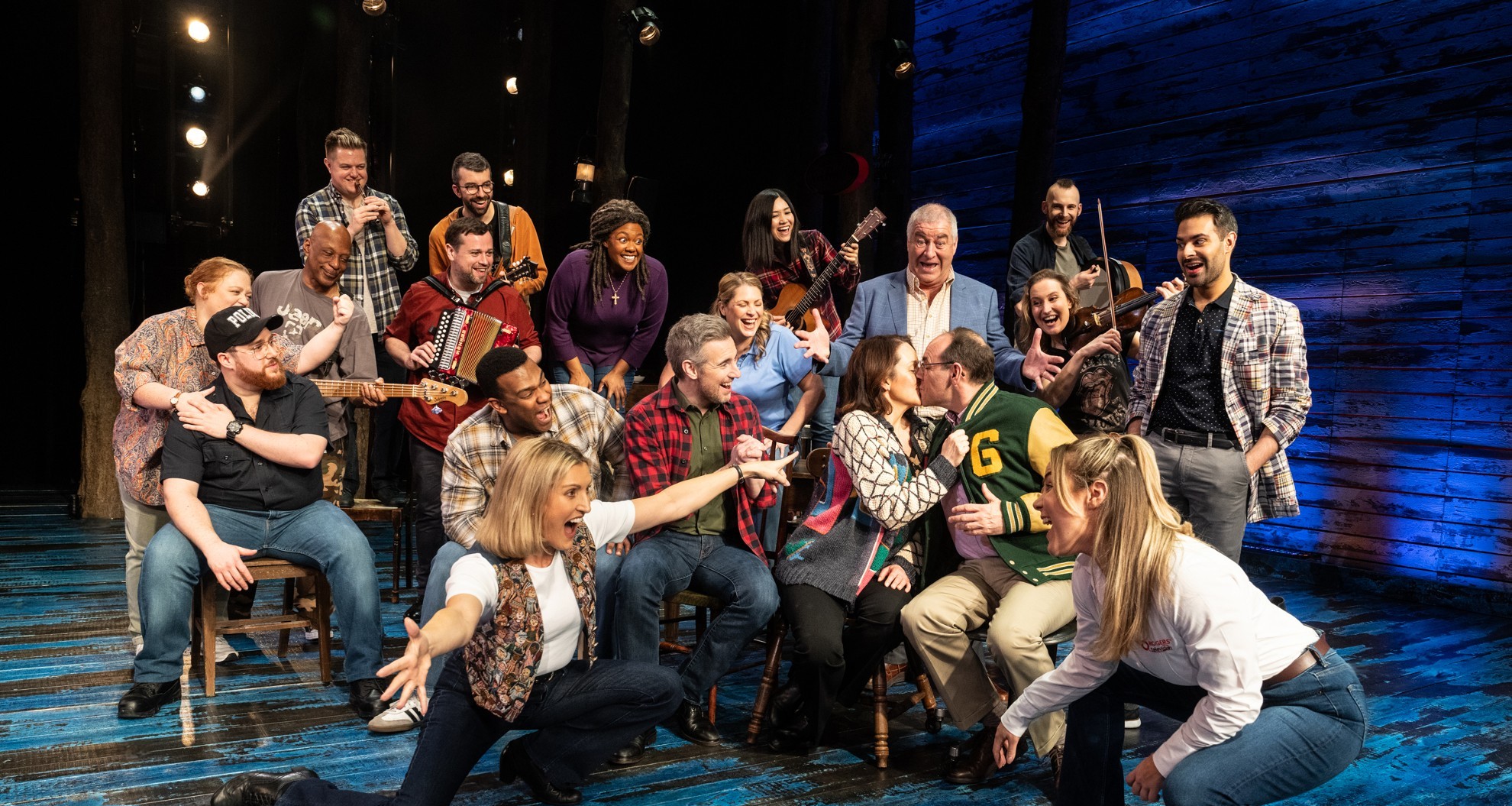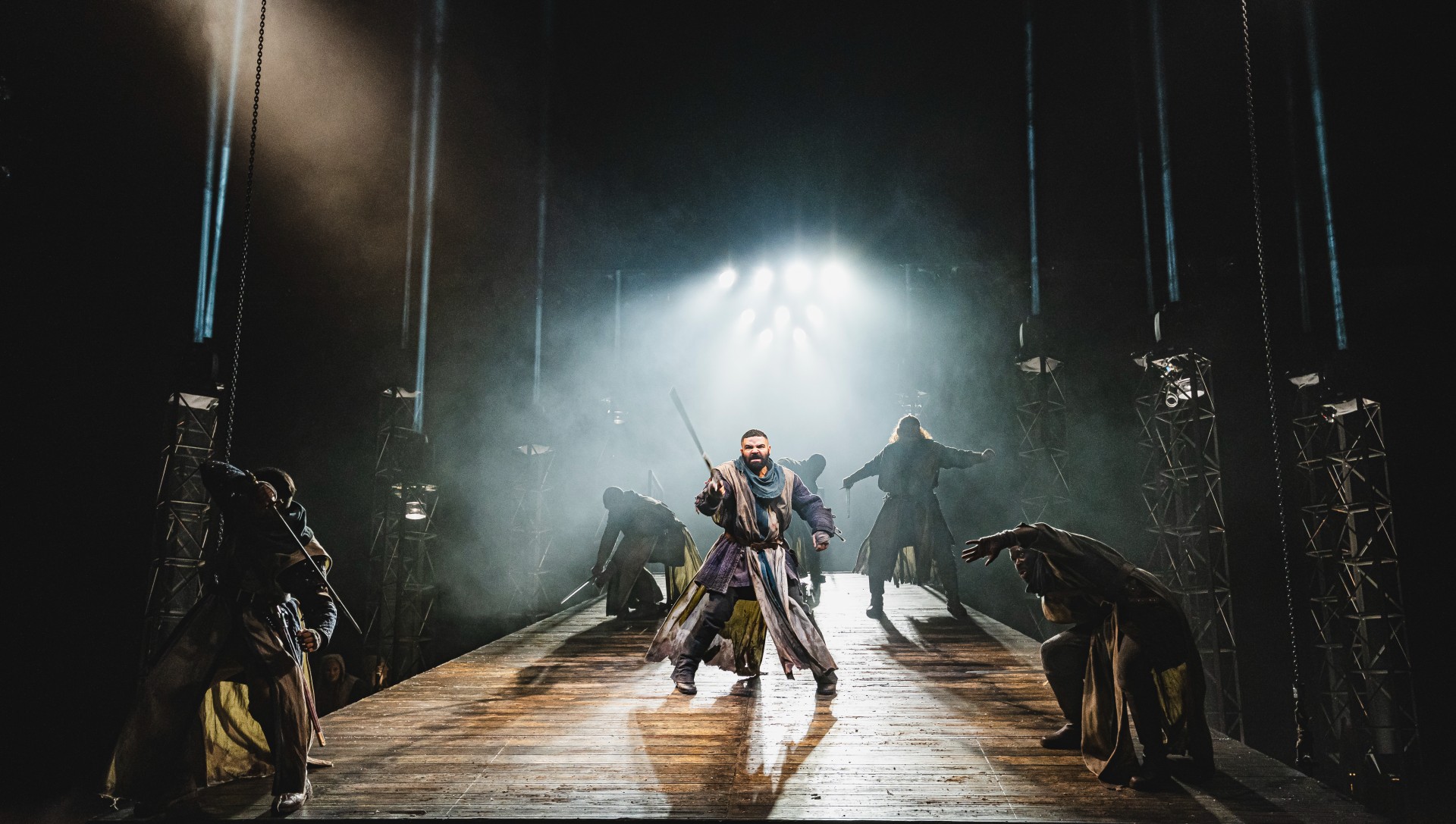The Courtyard Theatre at Leeds Playhouse is quickly becoming one of my favourite venues. On several occasions, I’ve gone to see a production there that I’ve known nothing about, feeling a bit dubious, and have been thoroughly delighted to be surprised by an excellent show. ‘Quality Street’ is another such show, going to prove that taking a chance on something new can often pay off.
Although set in the Regency Era during the time of the Napoleonic Wars, ‘Quality Street’ was actually written in 1902 by non-other than J.M. Barrie, the creator of ‘Peter Pan’. Barrie was a lover of the theatre, and his numerous plays were known for being light-hearted dramas, focusing on relationships and classes. ‘Quality Street’ is no different, based on the lives of two sisters who own a house on said street.
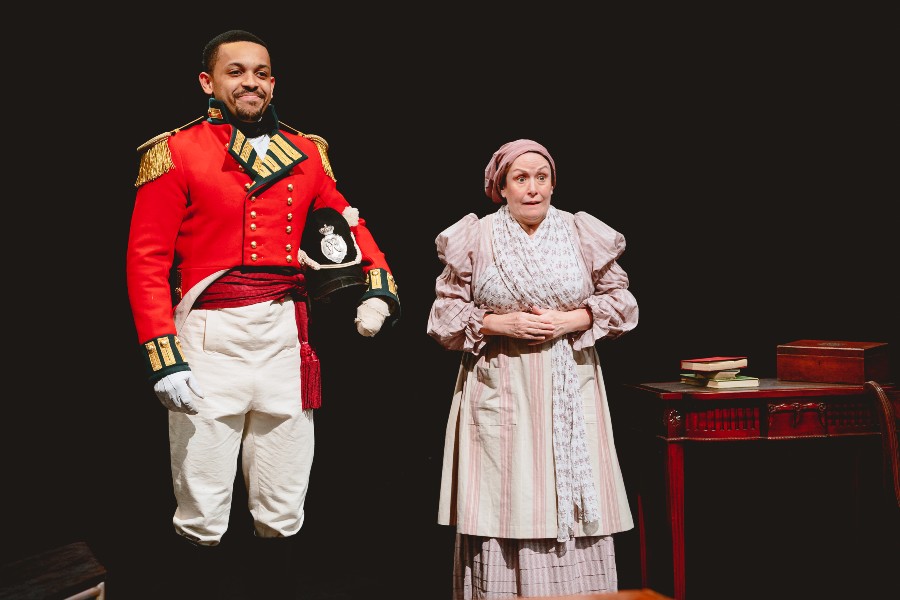
The eldest sister, Susan, a spinster, places much hope in her younger sister’s marriage, and in 1805 it is believed a union would soon be made between Phoebe and the charming Mr Brown. However, this hope is dashed upon his revelation that he has instead enlisted in the military. Poor financial advice also leaves the sisters struggling as they are forced to open a private school in their own home.
Fast forward 10 years later and the final Battle of Waterloo ensured Napoleon’s defeat once and for all, allowing the military men to come home to an array of balls and celebrations, including a certain Mr Brown. The 10 years had been harsh on the sisters and Phoebe is not the energetic girl with ringlets he once knew, and was instead a tired, subdued school teacher. At the age of 30 Phoebe’s dreams of returning to the girl she once was seem now an impossibility – or could the renewed celebratory atmosphere in the town provide the perfect excuse for her to bring out dancing dresses once again? And how could she possibly free this hidden creature without destroying the reputation of her much relied on school? The comedy/drama unfolds……………
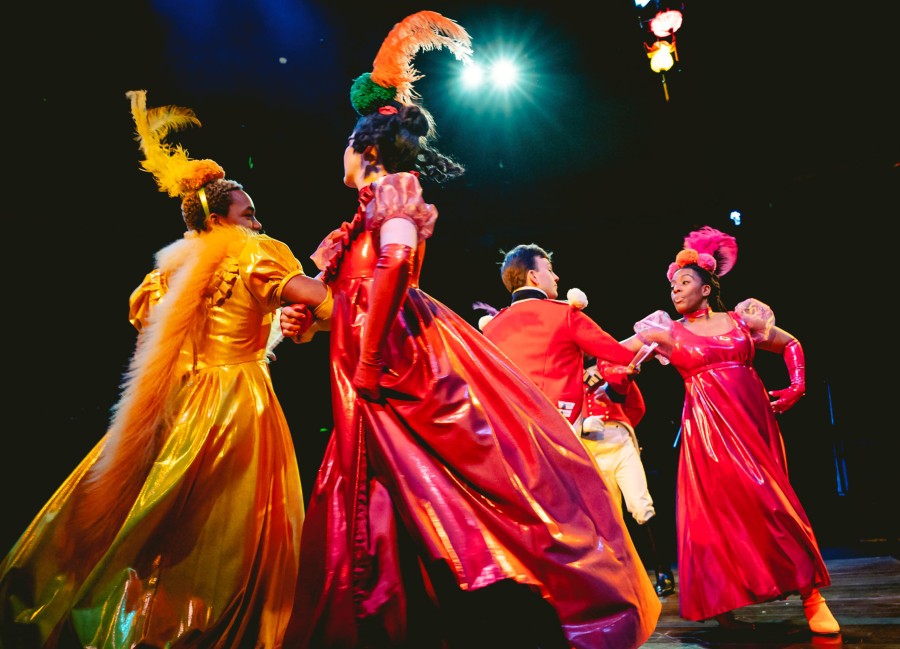
This production of ‘Quality Street’ is a far cry from the original show you would have seen 100 years ago. First of all, the set is minimalistic, the steel frames offering a suggestion of a building, creatively giving the dimensions of a room whilst allowing the audience to see the whole stage, as well as providing useful levels. It also allows for the juxtaposition between Regency Halifax and the modern-day Halifax, with the street factory workers, the steel representing industry with the large factory-style doors in the background adding to the location.
Northern Broadsides, who are co-producers alongside the New Vic, has established a reputation over 31 years for taking both classic and new plays and injecting Northern energy and creativity into their productions. The originality of this production is no different, with them creating a play-within-a-play. During rehearsals for this production, they invited factory workers from the chocolate factory in Halifax where they are known as ‘Mac’s Lasses’ to watch the sessions and comment on the characters and stories. They were recorded during these sessions and the company found their answers so insightful and comical that these discussions were used verbatim throughout the production. This crossing over of two opposing times and two opposing classes allows for a modern take to the production.
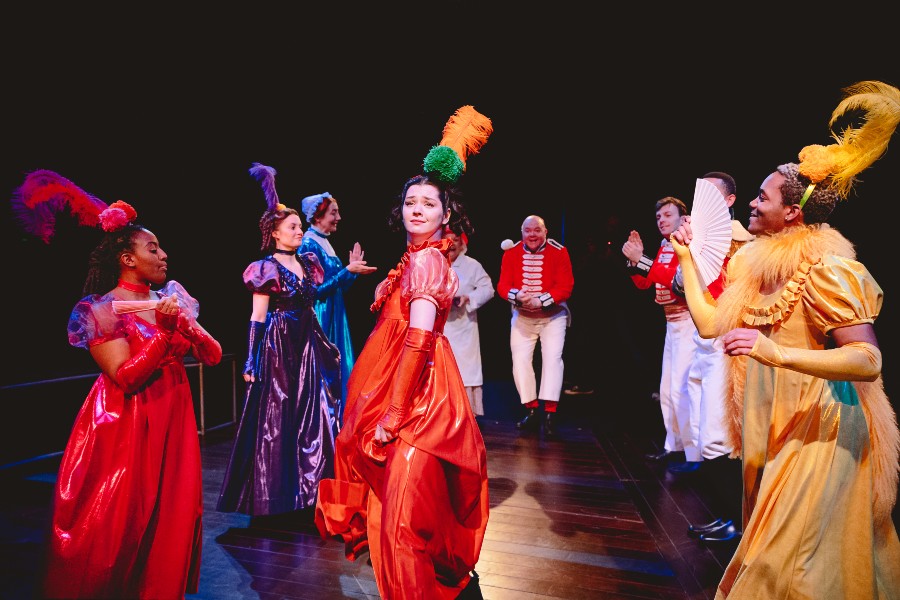
At the start of the play we are greeted by actors playing these 5 original shopfloor workers. They break the 4th wall, talking openly and honestly to the audience about their experiences as factor workers and their excitement over the upcoming show. This insight into both the play and their factory is a useful backstory for those with no prior knowledge, like me, and it was a creative way of making it more accessible and relatable. The workers all had their individual personalities and stories and spoke with an hilarious bluntness that you wouldn’t get normally in a decidedly middle-class Regency play.
Throughout the show these characters return, making comments and analysing each other and the audience about the production of ‘Quality Street’ that they are watching with us, highlighting particular sides of the arguments over which characters were in the right and what options were open to them. In particular, they drew parallels between the lives of women then and now, focusing on the increased number of options that are available in the 21st Century. The character of Barbara, played by Gilly Tompkins, was a particular favourite, her welcoming nature and light humour creating a grandmotherly role, helped by her dishing out chocolates to the audience.
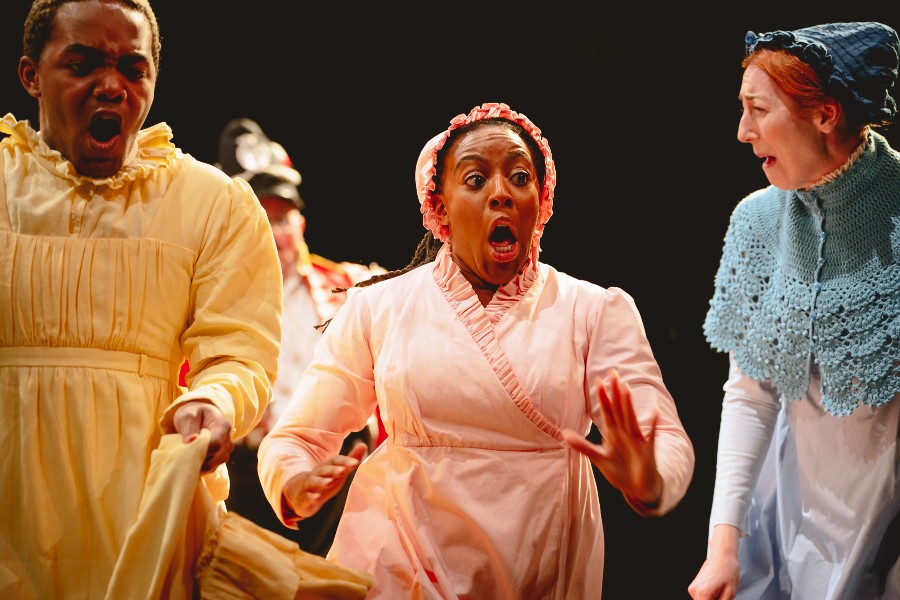
When the original material from Barrie’s play began, the directing, by Laurie Sansom, was a pleasant mixture of traditional Regency style and modern interpretation. The manners and behaviours were fitting the style, and were recognisable from any Jane Austen novel. However, similar to the way that Bridgerton has been produced, many modern references have been included, such as the ‘funky-chicken’ and ‘robot’ dancing. Also like Bridgerton, this is not one for people who like their historic productions to be historically accurate. But then this play was never intended to be, even when written. The things that are important, such as class and gender divides, and rules of social etiquette are made excessively clear. The rest is designed to appeal to whatever audience in whatever decade is watching, and this is exactly what this play does. The same critics have complained about Bridgerton on similar issues, but honestly, why shouldn’t female roles be played by a male actor and what does ethnicity matter on stage? This play is about enjoyment and so I fully applaud Northern Broadsides for accepting diversity and doing exactly what they wanted to it….it worked wholeheartedly for me!
Although the play is comedic and lighthearted, there’s also enough tragedy to make you really sympathise with the leading lady Phoebe (Paula Lane). Her lack of choices and 10 years worth of repression brought nothing but respect for her. I applauded her deceit in Act 2 and her transition between her two roles (I won’t spoil the whole plot for you) was expertly handled. This was a real ensemble performance and all the multiroling was well controlled, with clear and obvious character changes. I particularly enjoyed the sheer creativity of having the children in the school performed as puppets by three of the cast members, again bringing not only comedy but also, modernity to a classic play.
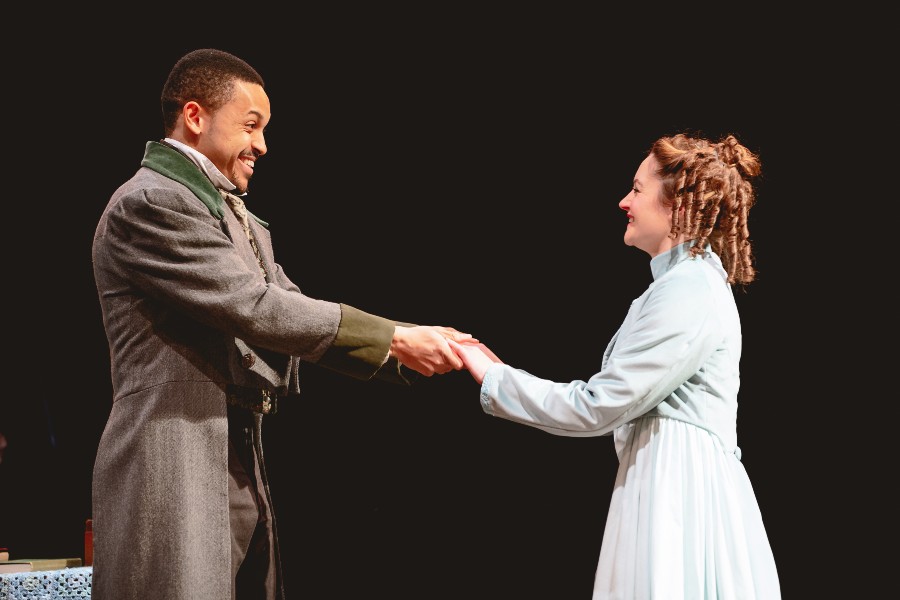
I’m definitely going to start being more adventurous and open minded about the productions I see at Courtyard Theatre. I don’t know if it’s the traditional proscenium arch set up, mixed with a small, cosier capacity and comfy seats, or if it is just a really good choice of plays recently, but it definitely seems to be the venue to go to at the moment.
If you’re a fan of Austen or Bridgerton then I can’t recommend this play enough. I’ll be keeping a close eye on Northern Broadsides too, as I hope to see more classic plays brought to both a 21st century and a Northern audience like this.
Tickets are available here.
Photography by Andrew Billington. Cover photograph – Paula Lane and Jamie Smelt.

